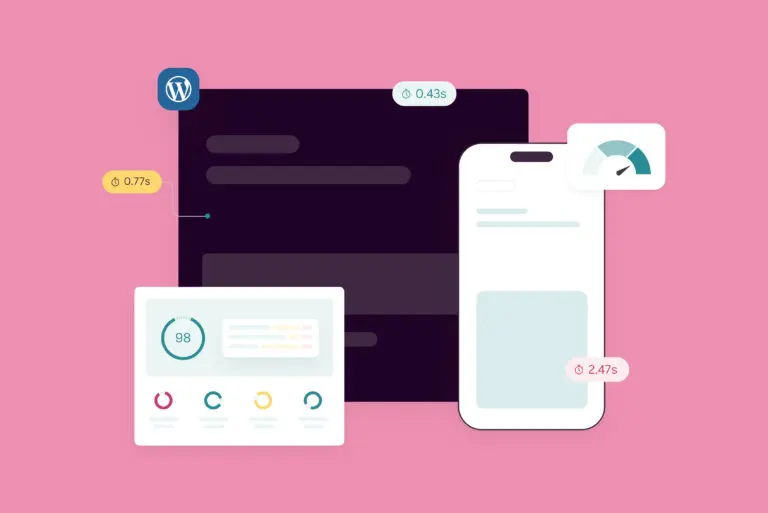Think you know everything about WordPress? Think again. WordPress Full-Site Editing (FSE) is here to change how you build and customize websites. This post explores why FSE is a game-changer for anyone involved in web development, especially agency owners, creative directors, and designers. Understanding FSE means you can create bespoke sites with more control and fewer limitations.

Many web developers stick to classic page builders or traditional themes. But Full-Site Editing features allow for a more cohesive and flexible design process. From editing template parts to managing site-wide color palettes, FSE lets you control every design aspect. This post will clarify key concepts and solve common issues when customizing your WordPress site.
Ready to elevate your WordPress game? Keep reading to unlock the full potential of WordPress Full-Site Editing.
Understanding WordPress Full-Site Editing
What is Full-Site Editing?
WordPress Full-Site Editing (FSE) is a comprehensive suite of tools that enables complete site customization directly within the WordPress block editor. Unlike traditional methods that often require coding
FSE empowers users to design all aspects of their website, including headers, footers, templates, and other site elements, using a consistent block-based approach.
Full-Site Editing leverages the same block structure used for posts and pages, extending it to the entire site.
The key components involved in FSE include the block editor, block-based themes, and global styles settings. These components work together to allow for seamless site-wide customization.
History and Development
The development of WordPress Full-Site Editing began with the introduction of the block editor, also known as Gutenberg, in WordPress 5.0. This was a revolutionary step towards a more dynamic and flexible content management system.
Since its initial release, Full-Site Editing has undergone numerous updates and improvements. WordPress 5.8 introduced the first set of FSE features, including template editing capabilities and global styles. Subsequent releases have continued to build on this foundation, incorporating user feedback and expanding functionality.
Some significant milestones in the evolution of FSE include the introduction of block-based themes, which are specifically designed to leverage the full capabilities of FSE. These themes provide a more cohesive and streamlined editing experience, making it easier for users to create visually appealing and highly functional websites.
Benefits of Using Full-Site Editing
The primary advantage of using WordPress Full-Site Editing is the ability to customize the entire site using a single, unified interface. This simplifies the design process and reduces the need for multiple plugins or custom code.
Full-Site Editing also offers significant improvements in workflow and productivity. Users can easily switch between editing different parts of their site, such as headers, footers, and templates, without leaving the block editor. This streamlined approach saves time and ensures a consistent design across the site.
Another key benefit of FSE is its accessibility. By lowering the entry barrier for site customization, FSE empowers users of all skill levels to create and maintain professional-quality websites. This democratization of web design has the potential to revolutionize the way people approach site-building.
Challenges and Limitations
Despite its many advantages, WordPress Full-Site Editing does come with its challenges. One potential drawback is the learning curve associated with the new tools and features. Users who are accustomed to traditional methods may find it challenging to adapt to the block-based approach.
Additionally, there may be compatibility issues with existing themes and plugins. Not all themes and plugins are fully optimized for FSE, which can lead to unexpected behavior or limited functionality. As a result, it is essential to thoroughly test and evaluate any third-party components before integrating them into an FSE-enabled site.
Common issues and fixes for FSE users include troubleshooting theme compatibility, resolving block editor conflicts, and optimizing site performance. The WordPress community provides extensive documentation and support resources to help users navigate these challenges and make the most of Full-Site Editing.

Exploring Full-Site Editing Features
The WordPress Block Editor
The WordPress Block Editor, also known as Gutenberg, plays a central role in Full-Site Editing. It provides a visual, drag-and-drop interface for creating and managing content blocks, making it easier to design and layout web pages.
Key functionalities of the block editor include the ability to add, edit, and rearrange content blocks, customize block settings, and create reusable block patterns. These features enable users to build and maintain complex page layouts with minimal effort.
Customization Capabilities
One of the most powerful aspects of WordPress Full-Site Editing is its customization capabilities. Users can personalize their site components, such as headers, footers, and sidebars, using the block editor. This level of customization allows for a more cohesive and visually appealing design.
In addition to customizing individual site components, FSE also enables users to build their themes. This involves creating custom templates and template parts, as well as defining global styles for typography, colors, and other design elements. Theme building with FSE provides unparalleled flexibility and control over the overall site appearance.
Global styles are another significant feature of FSE. They allow users to define and manage consistent design elements across the entire site, such as font families, color palettes, and layout settings. This ensures a unified look and feel, enhancing the user experience.
Reusable blocks are a valuable tool for maintaining consistency and efficiency in site design. By creating and saving custom blocks, users can easily reuse them across multiple pages and templates, reducing the need for repetitive work.
- Theme building: Create custom themes tailored to your specific needs.
- Global styles: Define consistent design elements across the entire site.
- Reusable blocks: Save and reuse custom blocks to maintain consistency and efficiency.
Extending Full-Site Editing
Full-Site Editing can be further enhanced through the use of plugins and extensions. These third-party components provide additional functionality and customization options, allowing users to tailor their site to their specific needs.
Plugins such as Block Variations and Block Extensions offer new ways to enhance and customize content blocks. These plugins can add unique features, such as advanced styling options, interactive elements, and dynamic content capabilities.
Third-party integrations also play a crucial role in extending FSE. By integrating with popular tools and services, users can enhance their site’s functionality and performance. For example, integrating with e-commerce platforms, email marketing services, and analytics tools can help create a more comprehensive and effective website.
The WordPress community actively contributes to the development and support of Full-Site Editing. Community contributions include creating and sharing block patterns, developing custom themes, and providing educational resources. This collaborative effort ensures that FSE continues to evolve and improve, benefiting users of all skill levels.
Real-World Examples
Case studies and success stories from various niches demonstrate the potential of Full-Site Editing. For example, a small business owner might use FSE to create a professional website that showcases their products and services. By leveraging the customization capabilities of FSE, they can create a unique and visually appealing site that effectively communicates their brand identity.
A creative agency might use FSE to streamline their workflow and improve collaboration among team members. By taking advantage of reusable blocks and global styles, they can ensure consistent design elements across multiple projects, saving time and reducing the risk of errors.
Success stories from various niches highlight the versatility and effectiveness of Full-Site Editing. Whether it’s a non-profit organization creating an engaging website to attract donors or a freelance designer building a portfolio to showcase their work, FSE offers the tools and flexibility needed to achieve their goals.
WordPress Site Customization Techniques
Using Templates and Template Parts
Building with templates is a fundamental aspect of WordPress Full-Site Editing. Templates provide a predefined structure for specific types of content, such as posts, pages, and custom post types. By using templates, users can create consistent layouts and design elements across their site.
Template parts are reusable sections of a template, such as headers, footers, and sidebars. By modifying and saving template parts, users can easily update multiple pages and templates simultaneously. This ensures consistency and reduces the need for repetitive work.
CSS and SASS Integration
Styling site elements with CSS and SASS allows for advanced customization and fine-tuning of the site’s appearance. By leveraging these powerful tools, users can create unique and visually appealing designs that enhance the overall user experience.
Advanced customization techniques involve using CSS preprocessors like SASS to streamline and optimize the styling process. SASS provides features such as variables, nested rules, and mixins, which make it easier to manage and maintain complex stylesheets.

Getting Started with WordPress Full-Site Editing
Initial Setup and Configuration
To enable WordPress Full-Site Editing, users need to ensure they have a block-based theme installed and activated. Block-based themes are specifically designed to work with FSE, providing the necessary templates and components for seamless site-wide customization.
The basic setup guide involves navigating to the Full-Site Editing interface, which can be accessed through the WordPress dashboard. From there, users can begin customizing their site by editing templates, creating template parts, and defining global styles.
Best Practices for Effective Use
To make the most of WordPress Full-Site Editing, users should follow some best practices for smooth operation. One key tip is to start with a well-designed block-based theme that provides a solid foundation for customization. This can save time and effort when building and maintaining the site.
Another essential practice is to take advantage of reusable blocks and global styles. By creating and saving custom blocks, users can maintain consistency and efficiency across their site. Global styles ensure a unified look and feel, enhancing the overall user experience.
Common pitfalls to avoid include overloading the site with too many plugins and customizations, which can impact performance and compatibility. It’s essential to thoroughly test and evaluate any third-party components before integrating them into an FSE-enabled site.
By following these best practices and leveraging the full capabilities of Full-Site Editing, users can create visually appealing and highly functional websites that meet their specific needs and goals.
Wrapping Up: Mastering Site Customization with WordPress
You’ve now gained insights and practical knowledge about using the WordPress Block Editor and its numerous features for site customization. These tools allow you to fine-tune your site’s design, from template parts to fonts and color schemes. This flexibility ensures that your website reflects your brand’s unique identity.
Now is the perfect time to apply what you’ve learned. Begin by exploring the editing tools and customizing the main sections of your site. Experiment with different layouts, navigation styles, and color palettes. The more you practice, the more comfortable and proficient you’ll become in crafting the perfect site.
We encourage you to contact the Hey Reliable team for any additional support or to discuss how we can help bring your vision to life. Share this post with your colleagues who might benefit from these tips. Your next step to a fully customized website is just a few clicks away!
Get started now
Start with a risk-free, no obligation proposal delivered to your inbox in one business day or less.
Get Started- 90-Day Code Guarantee
- 100% White Label - Sign our NDA
- 24/7 M-F Expert Support




